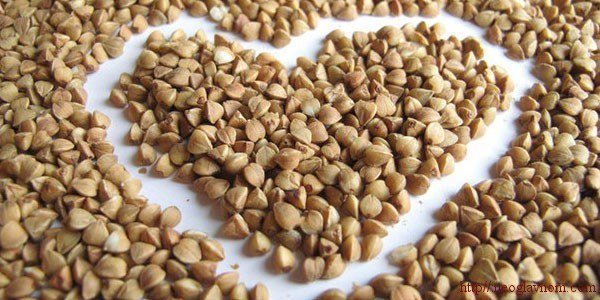Buckwheat

The buckthorn is one of the most unique plants belonging to the Lapad family. Its homeland is considered to be the mountainous regions of India and Nepal, where its cultivation began about 4,000 years ago.
In the 20th century, they began to be called the “queen of cereals” due to its record content of vitamins, minerals, microelements, complete proteins, necessary for maintaining good human health.
Of course, this applies to raw buckwheat, which is processed using a special technology. As a result of the application of this technology, unmilled buckwheat does not lose its ability to germinate.
Whole grain foods, flour, and also medicinal preparations are produced from this crop. Even pillows are filled with the husk of buckwheat seeds, which help with insomnia.
Nutritional value of buckwheat grains (100 grams)
• Proteins – 13.6 grams;
• Fats – 3.3 grams;
• Carbohydrates – 62.5 grams;
• Mineral salts – 1.8 grams;
• Water – 14 grams;
• Calorie content – 313 kilocalories;
The energy value of buckwheat grains is 313 kilocalories per 100 grams, 100 grams of porridge from the seeds of this crop contains 132 kilocalories. When a person uses them no more often than 2-3 times a week, he should not be afraid of an increase in body weight.
Beneficial properties
Buckwheat contains 18 essential amino acids and the following minerals – iron, calcium, potassium, phosphorus, copper, iodine, zinc, boron, fluorine, mobildenum, cobalt, and also vitamins B1, B2 , B9 /folic acid/, nicotinic acid, vitamin E.
The colored aerial part of buckwheat is a source of rutin, phagopyrin, procatechinic, gallic, chlorogenic and caffeic acid, and the seeds – starch, proteins, sugar, oil, organic acids (maleic, oxalic, malic and citric/), riboflavin, thiamin , phosphorus and iron.
By the content of lysine and methionine, buckwheat proteins surpass all cereals. High digestibility of up to 80% is characteristic of these proteins. Buckwheat is a valuable protein, low-carbohydrate and dietary food.
The large amount of folic acid in this culture stimulates hematopoiesis, increases the body’s endurance and resistance to many diseases. In terms of fat content of all cereals used as food, buckwheat is inferior only to oats and wheat, and the concentration of proteins surpasses all.
Buckwheat is recommended for atherosclerosis, liver diseases, hypertension, for edemas of various origins.
Medicinal preparations created on the basis of the flowers and leaves of this plant from the Lapad family help to strengthen the walls of blood vessels and increase their elasticity, accelerate the healing of wounds, have a beneficial effect on diseases of the upper respiratory tract, scarlet fever, measles and radiation sickness.
Scientists explain this broad-spectrum effect of buckwheat not only with its rich chemical composition, but also with the high content of rutin in its leaves and flowers, which has an effect similar to vitamin P.
It is not unimportant that buckwheat is an ecologically clean plant, unpretentious to the soil, grown without chemical fertilizers.
The presence of weeds does not affect the normal growth of the plant, even it independently suppresses their growth, therefore the cultivation of buckwheat does not require the use of pesticides.
It is desirable to use the raw buckwheat grains, because during their heat treatment almost all vitamins and minerals, all the useful substances that this culture is rich in are destroyed.
Raw buckwheat is extremely useful for various diseases of blood vessels, arthritis and other rheumatoid diseases.



